Diabetes can affect men at any stage in life. This condition in men is characterized by blood glucose levels of more than 140 mg/dL (post the administration of prandial), leading to several symptoms and complications [1]. The condition is diagnosed as diabetes or diabetes mellitus. It is a metabolic disorder which can be of two major types in men depending upon the underlying cause.
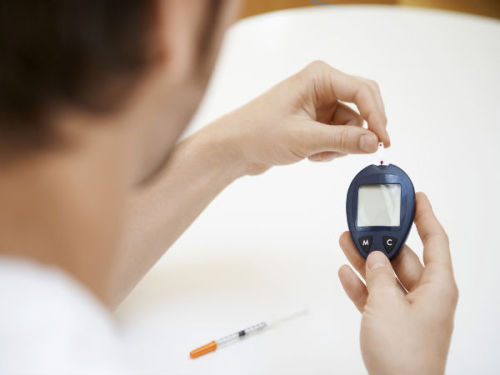
Diabetes can occur to men at any stage of life. While the exact cause of the different types of diabetes is still unknown, it is generally agreed upon that the disease is caused by a combination of genetic factors, which are triggered off by environmental factors.
Some of the risk factors that cause men to be susceptible to encountering any type of diabetes include the following:
- Men who are obese or heavily overweight with a BMI greater than 30 are at a higher risk of encountering diabetes.
- Men who tend to lead a sedentary lifestyle with little or no physical activity.
- Men who indulge in carbohydrate and sugar rich diets on a regular basis.
- Men who have a history of any type of diabetes having occurred to family members.
Diabetes in men causes a number of complications with many different organs of the body. This is because the nerves and the blood vessels get damaged due to the presence of extra glucose in the blood stream. Complications may involve disorders with the cardiovascular system, the kidneys, the hands and the feet, the ears and also the eyes.
Type I Diabetes in Men
In this type of diabetes, the diabetic individual’s immune system acts against the own body. In this disorder, the beta cells located in the pancreas are destroyed by the immune system. The beta cells are the cells which are responsible for the production of the hormone insulin and once these are damaged or suffer from dysfunction, the levels of insulin go down. Insulin is the hormone which stimulates different cells of the body to take up glucose from the blood stream. Lack of insulin proves to cause an increase in the blood sugar levels of individuals, leading to Type I Diabetes.
While Type I Diabetes can occur to an individual at any age, it is a much more common disorder amongst children and younger adults. Type I Diabetes is however, much less common that Type II Diabetes and affects less than 10% of the total sufferers of diabetes.

Signs and symptoms of Type I Diabetes in Men
Type I Diabetes manifests itself in men with a number of related symptoms and signs. These may include:
- Erectile dysfunction might be found in males due to type I diabetes. This happens because the delicate blood vessels and the nerves which carry blood to the genitals and the erectile tissue get damaged due to the presence of excess glucose in the blood.
- Excessive urination is a very common symptom involving Type I Diabetes. Also known as polyuria, this common symptom of diabetes causes the affected individual to feel an urge to urinate several times in a day, even more than 2.5 liters per day. This is because the body tries to eliminate the excess glucose through urine.
- Increased thirst: Polydipsia or excessive thirst is another common symptom of Type II Diabetes Mellitus which is induced due to loss of fluids from the body.
- Increased hunger: Also known as polyphagia is found in diabetic patients as the body cells do not get sufficient calories for routine activities due to accumulation of glucose in blood and inability of glucose to enter these. As more food is consumed, it is broken down to release even more sugar into the blood, while the body cells are unable to take these up.
- Slow healing of wounds is another important feature that is seen to be a very common phenomenon in diabetic patients. The immune systems of diabetic individuals are greatly hindered by the presence of excess sugar in the blood and consequently, any wounds or damages done to be the body take an exceptionally long time to heal.
- Numbness or tingling sensation in limbs: When a person feels loss of sensation in his/her hands or feet as the blood circulation are reduced due to accumulation of high level of glucose in bloodstream. While these sensations may be mild, proper attention must be provided to them in order to prevent the worsening of symptoms.
- Prone to infections: A diabetic person is more prone to an infectious disease as compared to a normal person due to lower blood circulation and a much lower immunity. Once infected, the body of the diabetic individual takes extremely long to heal and often the infections tend to spread around at a rapid rate. As such, diabetic individuals are urged to be up to date and also regular with their vaccinations in order to prevent the onset of infectious diseases.
- Fatigue and weakness that may be accompanied with nausea, persistent headaches, and vomiting is also common in Type I Diabetes. The cause of this is the fact that the body cells do not receive enough sugar or energy in order to function at optimal levels. Diabetic individuals must maintain extremely high care as weakness and faint can be triggered at different times by different factors.
- Some of the other miscellaneous symptoms of Type I Diabetes include the blurring of vision, an unexplained weight loss, a lack of interest, a fruity odor in the breath and also loss of concentration while working or performing daily activities.
Type II Diabetes in Men
In Type II Diabetes, the body cells of the individual show a resistance to the effects of insulin [2]. The condition is also known as Non-Insulin Dependent Diabetes Mellitus. While insulin may be produced by the pancreas, the body cells show little or no effect and are unable to effectively absorb the sugar from the blood stream. This results in an increase in the blood glucose levels, high enough to be classified under Type II Diabetes.
Type II Diabetes is the most prevalent form of diabetes in the world, accounting for almost 90% of the total diabetic cases. While Type II Diabetes is typically encountered at an elderly age, there are some cases of the disorder being diagnosed in children and in young adults.
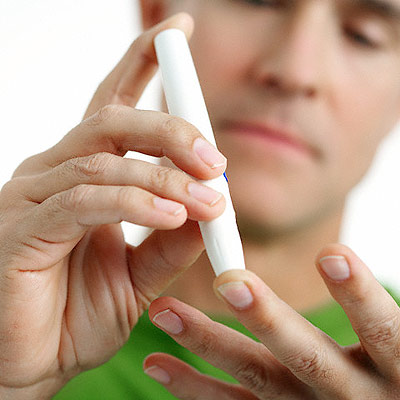
Signs and Symptoms of Type II Diabetes in Men
Diabetes manifests itself with a number of different signs and symptoms, which are largely consistent across the different types of diabetes. While the symptoms and the signs may be the same, it is very important to be able to distinguish Type I Diabetes from Type II Diabetes as the disorders have methods of treatment which are quite different from each other.
Some of the signs and symptoms of Type II Diabetes in men include:
- Loss of libido and sexual impotency
- Pigmentation on the skin with the appearance of velvety patches or dark spots
- Itching, rashes and infection may be common around the genital area
- Weight gain that could be sudden or unexpected due to the improper metabolism of excess carbohydrates and fats in the body
- Dryness of the mouth and a feeling of being dehydrated
Diagnosis of Diabetes in Men
Diabetes can be diagnosed by a number of medical tests. These include:
- Oral glucose tolerance test (OGTT)
- A1C test, also known as hemoglobin A1C or the glycohemoglobin test
- Fasting blood sugar test
- Random sugar test with a glucometer
- The 8 autoantibody test which helps to determine the type of diabetes in individuals
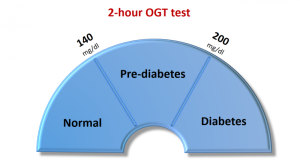 |
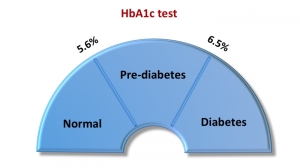 |
Screening tests are also recommended for men who are at a risk of encountering some type of diabetes [3]. Screening can greatly help in determining prediabetes at an early stage and appropriate measures can be taken to control and treat the condition at the earliest before any chances of complications arise.
The diagnosis of diabetes also goes hand in hand with a number of other diagnostic tests in order to determine the underlying causes and also to find out if any other parts of the body or the body organs have suffered any damage. The kidneys, the liver and the cardiovascular systems in diabetics are often diagnosed for disorders. Frequent tests for monitoring the blood sugar levels, blood pressure levels, the condition of the ears and the eyes and also examination of the hands and the feet are commonly carried out tests in patients who are suspected to be at a risk of encountering diabetes.

Complications associated with Diabetes in Men
Diabetes is a long lasting or chronic condition and care must always be taken by diabetics to keep their blood sugar levels under control. While prediabetes may not be a chronic condition, if left untreated, it can very easily lead to Type II Diabetes. As such, any form of diabetes should be dealt with utmost care in order to prevent the chances of any complications happening.
Complications can be kept in check by following a strict diabetic diet combined with heavy and rigorous physical activity [4]. In some special cases, medication and other forms of treatment may be used in order to keep complications at bay.
Some of the complications that are associated with the different types of diabetes include:
- Extreme cases of dehydration due to excessive loss of fluids from the body
- Nerve damage or atherosclerosis, a condition in which the arteries and the blood vessels tend to get damaged due to the presence of excessive amounts of glucose in the blood stream
- Nephropathy or damage caused to the kidneys due to improper amounts of sugar in the blood stream
- Various cardiovascular disease which may lead to strokes and seizures
- Retinopathy or damage to the blood vessels of the retinas of the eyes, which might even lead to permanent blindness if left completely unattended to
- Infections occurring on parts of the body which are exerted more than others such as the feet and the hands. Complications can even lead to amputation of limbs in order to stop infections from spreading
- Loss of hearing due to damage caused to the blood vessels of the ear canal
- Diabetic coma may occur in individuals who face extreme dehydration
- Skin disorders and skin conditions may also manifest in cases of untreated diabetes
- Susceptibility to Alzheimer’s disease and some other diseases encountered in old age
Treatment of Diabetes in Men
The treatment of diabetes primarily involves maintaining the blood sugar levels under control. This can be done with a combination of a healthy diabetic diet combined with regular physical activity. In some cases, external insulin administration or the use of other medications is also resorted to in order to successfully keep the blood glucose level in check.
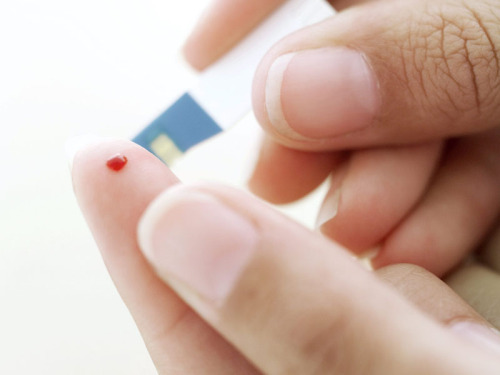
Diabetics are required to conduct very frequent monitoring of blood sugar levels and must have regular medical check-ups. While diabetes cannot be completely cured, the symptoms of the disease can be easily kept in check if diabetics follow a strict and healthy lifestyle. This allows diabetics to enjoy a higher quality of life, but a diabetic individual always needs to take care of themselves throughout the course of their lives to prevent any complications.
Prediabetes is the stage where one can control the blood sugar level from rising and prevent diabetes from occurring [5]. This can be treated with exercise as well as diabetic diet. While prediabetes may not be a chronic condition, care must be taken to manage the symptoms and to bring the blood sugar levels down as prediabetes may easily develop into Type II Diabetes. As such, prediabetes patients should always be on their toes and maintain a healthy diet combined with regular exercise.
Type I Diabetes, unfortunately cannot be treated and managing the condition and its symptoms with exercise, a diabetic diet and insulin is the only way to manage living with the condition.
Type II Diabetes is first controlled with an exercise plan, a reduction in weight and by following a strict diabetic diet. It is only when these measures fail, that oral hypoglycemic drugs such as metformin, prandin, glimepiride and pioglitazone are administered to Type II Diabetes sufferers. If oral medications also prove to be insufficient, treatment with insulin or insulin analogues like insulin Lispro, insulin Glargin and insulin Aspart may be considered useful.
References
[1] Excess risk of fatal coronary heart disease associated with diabetes in men and women: meta-analysis of 37 prospective cohort studies, Rachel Huxley, Federica Barzi,; BMJ2006;332:73 – 12 January 2006 – DOI: 1136/bmj.38678.389583.7C, http://www.bmj.com/content/332/7533/73?linkType=FULL&ck=nck&resid=332/7533/73&journalCode=bmj
[2] The Metabolic Syndrome and Total and Cardiovascular Disease Mortality in Middle-aged Men, Hanna-Maaria Lakka, MD, PhD; David E. Laaksonen, MD, MPH; Timo A. Lakka, MD, PhD; Leo K. Niskanen, MD, PhD; Esko Kumpusalo, MD, PhD; Jaakko Tuomilehto, MD, PhD; Jukka T. Salonen, MD, PhD,; 2002;288(21):2709-2716 – December 4, 2002 – DOI: 10.1001/jama.288.21.2709, http://jama.jamanetwork.com/article.aspx?articleid=1108360
[3] Health Consequences of Obesity in Youth: Childhood Predictors of Adult Disease. William H. Dietz, MD, PhD,; PEDIATRICS Vol. 101 No. Supplement , pp. 518 -525 – March 1, 1998 – http://pediatrics.aappublications.org/content/101/Supplement_2/518.short
[4] Inflammation, Aspirin, and the Risk of Cardiovascular Disease in Apparently Healthy Men, Paul M. Ridker, M.D., Mary Cushman, M.D., Meir J. Stampfer, M.D., Russell P. Tracy, Ph.D., and Charles H. Hennekens, M.D.; 1997; 336:973-979 – April 3, 1997 – DOI: 1056/NEJM199704033361401, http://www.nejm.org/doi/full/10.1056/nejm199704033361401
[5] European guidelines on cardiovascular disease prevention in clinical practice: Third Joint Task Force of European and other Societies on Cardiovascular Disease Prevention in Clinical Practice (constituted by representatives of eight societies and by invited experts), Guy De Backer (Chairperson), Ettore Ambrosionie,; vol. 10 no. 1 suppl S1-S78 – December 2003 – DOI: 10.1097/01.hjr.0000120621.99766.ef, http://cpr.sagepub.com/content/10/1_suppl/S1.short
